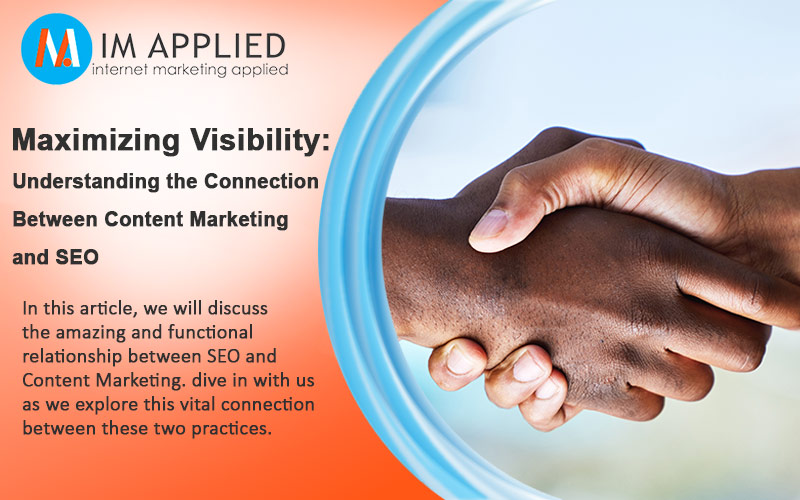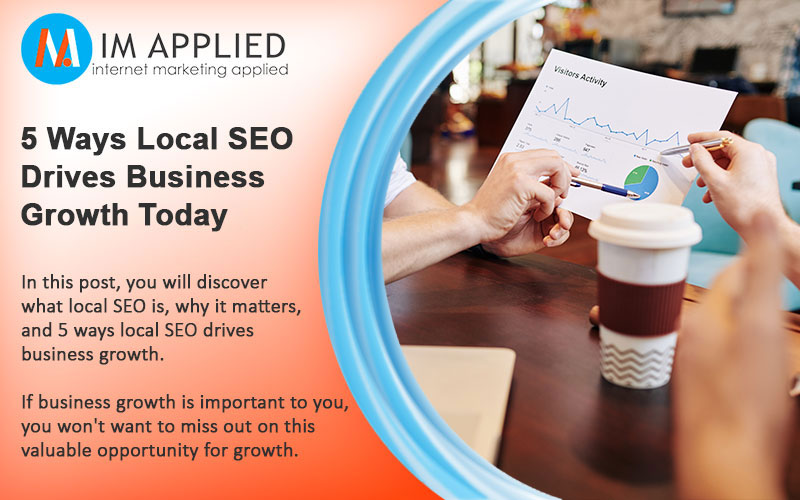In today’s digital market, driving traffic and sales to your e-commerce store requires more than just a standout product range; it entails harnessing the power of SEO. This informative guide breaks down e-commerce SEO and how to drive more traffic and sales to your online store, offering tailored strategies to attract and engage more customers and directly increase your bottom line.
Key Takeaways
- E-commerce SEO is essential for increasing visibility and driving sales by improving search rankings and creating a seamless user experience. It includes optimizing product pages and conducting keyword research.
- Improving site architecture, increasing page load speeds, and ensuring mobile optimization are critical factors in enhancing user experience, directly impacting SEO effectiveness and customer engagement.
- Content marketing strategies like blogging, utilizing user-generated content, and incorporating video content work alongside advanced link-building techniques to boost SEO by providing valuable information and earning quality backlinks.
Unlocking E-commerce SEO: Boost Your Online Store’s Visibility

SEO for e-commerce is no longer an option – it’s a must-have. It’s the driving force that propels your online store to the top of the search engine results, making your products visible to a vast audience. But it’s not just about visibility. A robust e-commerce SEO strategy can provide a high return on investment, leading to:
- Increased organic traffic to your website
- Improved brand visibility and credibility
- Higher conversion rates and sales
- Long-term growth and sustainability
It’s like having a salesperson who works relentlessly, 24/7, bringing potential customers to your online store.
But how do you unlock the power of e-commerce SEO? It involves:
- Improving the performance of your online store in the search results
- Increasing visitors without the need for paid ads
- Optimizing product pages with relevant keywords
- Creating high-quality content for backlinks
- Ensuring a clear and functional site architecture
A high online store ranking on Google will generate more visitors and sales for online stores, underlining the advantages of effective SEO.
Crafting an Effective E-commerce SEO Strategy
Crafting an effective SEO strategy for your e-commerce site is akin to drafting a battle plan. It requires a deep understanding of your market, your competition, and, most importantly, your customers. On-page SEO is critical for e-commerce platforms as it helps Google accurately discern the content and purpose of a page, improving its ranking in search engine results pages (SERPs). An integral aspect of this strategy involves using keywords within URLs, contributing to higher search engine rankings when utilized correctly.
Conducting Comprehensive Keyword Research
Keyword research is the backbone of any e-commerce SEO strategy. It’s the process of identifying high-value search terms that potential customers use, ensuring you’re targeting keywords that are easier to rank for, have a decent search volume, and are more likely to convert into sales. But how do you uncover these high-converting target keywords?
Various keyword research tools and techniques are available. Tools like Google Keyword Planner, Ahrefs, and Amazon autocomplete predictions can be invaluable for generating keyword ideas relevant to your e-commerce site. In addition, organizing keywords by difficulty, search volume, and search intent allows you to prioritize those with high buyer intent, maximizing the keyword spread across your site.
Investigating competitors who rank highly for desired keywords can also provide valuable insights, helping you target valuable keywords to improve your own site’s rankings.
Optimizing Product Pages for Search Engines
Product pages are the heart of any e-commerce site, and optimizing them for search engines is crucial for attracting traffic and driving sales. One way to achieve this is by implementing relevant keywords within detailed product descriptions on your product pages, which can lead to higher search engine rankings.
But it’s not just about keyword placement. Search engines like Google assess the content on product pages to determine what keywords the page should rank for and its position in search rankings. This means that keywords included in metadata can optimize the click-through rate (CTR) and indirectly influence search engine rankings.
Furthermore, page title tags highlight the page’s central themes, are critical in e-commerce SEO, and contribute to higher organic search rankings. However if this all seems like it will take time out of other important parts of your business, you can always hire a professional SEO Agency such as our own, we offer a free 20 minute discovery call to discuss your business’s SEO needs.
Enhancing User Experience for Better SEO Results

In the world of e-commerce SEO, user experience matters. It’s not just about making your site look good; it’s about providing visitors with a seamless and enjoyable journey. A site that’s easy to navigate, loads quickly, and provides valuable content will keep users engaged and returning for more, contributing to higher search engine rankings.
But enhancing user experience isn’t always straightforward. It involves improving website loading speed, which is critical as more than half of online shoppers will abandon a purchase if they encounter a slow-loading website. It also requires avoiding keyword stuffing, which can harm readability and lead to search engine penalties, ultimately hindering user experience and SEO.
Moreover, optimizing the user experience can increase click-through rates, resulting in more traffic and the potential for higher sales.
Streamlining Site Navigation
A robust site architecture is vital for SEO as it affects both search engine rankings and user experience, directly influencing the duration of visits and interaction quality on a website. Straightforward and intuitive website navigation, helped by a logical and simple structure, aids users in efficiently finding the information they seek, significantly reducing bounce rates, which is beneficial for search engine rankings.
Effective navigation structures improve user experience by simplifying access to information and supporting search engines in better understanding a website’s content for improved ranking. By implementing strategic internal linking and providing sitemaps, search engines can efficiently crawl a site, contributing to SEO by enhancing site navigation and ensuring important pages rank well.
Accelerating Page Load Times

As the saying goes, time is money. This couldn’t be truer in the world of e-commerce. Every second that your page takes to load could cost you potential customers. Optimized hosting solutions, compressing images, minimizing redirects, leveraging browser caching, and using content delivery networks are key methods to accelerate e-commerce page load times.
There are also more technical methods to speed up page responsiveness. Some of these methods include:
- Applying asynchronous and deferred loading for CSS and JavaScript files to allow for the simultaneous loading of resources, enhancing page load speeds.
- Minifying CSS, JavaScript, and HTML files by eliminating unnecessary characters and spacing to decrease file sizes, further enhancing page load speeds.
- Monitoring Core Web Vitals to gain insights into user experience metrics that are crucial for SEO performance and are used by Google as ranking factors.
Mobile Optimization: A Non-Negotiable Factor
In today’s digital age, mobile optimization is no longer a luxury; it’s a necessity. With the shift towards mobile-first indexing by search engines and the surge in mobile searches, mobile responsiveness is essential for any ecommerce website wanting to improve search engine rankings and connect with a wider audience.
Mobile-responsive navigation design is essential for easier navigation on small screens and enhancing a website’s performance and user experience, which are significant factors in SEO. Therefore, ensuring your e-commerce site is mobile-friendly will cater to the growing number of mobile users and improve your site’s SEO.
Content Marketing: Fuel for E-commerce SEO

Content marketing and e-commerce SEO go hand in hand. Creating and sharing relevant, valuable, and consistent content can attract and engage a defined audience, ultimately driving profitable customer actions. Blogging can increase brand awareness by showcasing thought leadership and industry expertise, improving an e-commerce site’s search engine rankings through keyword inclusion and informative content.
Moreover, incorporating call-to-actions within blog posts can directly increase lead generation and sales conversions for an e-commerce site.
- Unique content fulfills searcher intent and establishes a brand’s authority
- Published research can attract valuable inbound links as others reference the findings
- Content marketing enables e-commerce stores to target a broader range of keywords
- Facilitates backlink acquisition, enhancing the site’s overall SEO profile.
Blogging: Connecting with Your Audience
Blogs serve as an essential platform for e-commerce brands to:
- Showcase their industry expertise
- Establish brand authority
- Target additional keywords
- Respond to customer inquiries
- Promote their e-commerce store
For an e-commerce blog to be successful, it is crucial to deeply understand the brand’s niche and the interests of the target audience to create content that engages and resonates with them.
But blogging isn’t just about creating content; it’s also about having a defined purpose. Whether informing customers, generating leads, or driving sales, ensuring that your content strategy contributes to achieving business objectives is key.
The process of creating compelling blog posts starts with the following:
- An outline that establishes the primary message and organizes the key points into structured sections
- Ensuring the use of SEO-friendly headings
- Maintaining a consistent and resonating tone of voice across all e-commerce blog articles
By following these steps, you can align with your brand’s identity and appeal to your target demographic.
Leveraging User-Generated Content
User-generated content (UGC) is a powerful tool for e-commerce SEO. Fresh UGC, such as customer reviews and testimonials, can help with SEO as it keeps the content up-to-date and relevant to users. Implementing a system to collect and display product reviews and ratings can improve SEO by adding regularly updated user-generated content to product pages.
But how do you encourage users to contribute product reviews? You can do this by sending follow-up emails after purchase, offering incentives, or making the review process simple and accessible. Additionally, features like a Q&A section on product pages enhance user engagement and contribute to SEO by adding unique and relevant content.
Building a community or forum can foster user-generated discussions and content, keeping your website dynamic and content-rich.
Video Content: Engage and Convert
In the digital era, video content is king. It’s engaging, shareable, and incredibly effective at converting viewers into customers. Incorporating video content on landing pages can potentially elevate conversion rates by more than 86%. Not only does video content support higher search engine rankings due to increased user engagement, but it also caters well to mobile users, a significant portion of whom consume video content on smartphones daily.
Videos are harmonious with both organic and paid marketing, complementing other content types like blog posts. Different types of video content, such as:
- demo videos
- brand videos
- advertisements
- user-generated content
Can cater to diverse marketing needs. Expert interviews in videos can amplify a brand’s authority and provide valuable information to customers. Utilizing various channels such as YouTube, Instagram, TikTok, and email campaigns can enhance the distribution and reach of video content.
Advanced Link-Building Techniques for E-commerce Sites

Link building is a critical aspect of SEO that often gets overlooked. Off-page SEO involves acquiring backlinks through collaborations with bloggers and retailers, which is crucial for e-commerce. Securing backlinks from websites with high domain authority can significantly improve search engine rankings.
Several advanced link-building techniques exist for e-commerce sites. Guest posting on relevant platforms is an effective way to build high-quality links and enhance SEO keyword rankings. After identifying leads for resource pages, it is essential to send personalized, non-robotic outreach emails to gain backlinks.
Cultivating High-Quality Inbound Links
Inbound links, or backlinks, are links from other websites that point to your site. They are like votes of confidence in your site’s content. Guest blogging on relevant sites provides content that can lead to inbound links. Creating comprehensive resource lists may encourage other bloggers to link directly to these resources, saving them time.
There are also other techniques to cultivate high-quality inbound links. Some of these include:
- Participating in expert roundups allows for relationship-building with influencers and can result in authoritative backlinks.
- Offering free tools or templates relevant to your audience can lead to inbound links as others share and use them.
- Partnering with complementary businesses can lead to mutual content linking and enhanced inbound link profiles.
Strategic Internal Linking
Internal linking is a critical part of SEO that often gets overlooked. Proper navigation and internal linking are crucial for e-commerce SEO as they ensure pages receive authority from the home page, thereby improving search engine rankings.
Internal linking has several benefits:
- It helps visitors find information on an e-commerce site
- It makes it easier for Google to crawl the site effectively
- It improves the user experience by providing relevant and related content
- It helps distribute link equity throughout the site
Implementing a solid internal linking strategy can enhance your site’s visibility and rankings in search engine results.
Incorporating a balance of internal links to product pages and external links to authoritative sites within blog posts can enhance an e-commerce site’s SEO by increasing the perceived value to search engines. Therefore, an effective internal linking strategy is crucial to boosting your site’s SEO.
Collaborating with Influencers and Brands
Influencer marketing has exploded in popularity in recent years, and for good reason. Partnering with influencers and brands is a strategic move that allows e-commerce businesses to:
- Tap into established audiences
- Foster brand recognition
- Host collaborative webinars
- Engage in influencer partnerships via social media
- Result in wider content distribution
- Gain valuable inbound links
Being featured in industry roundups on authoritative websites boosts an e-commerce store’s visibility to new audiences and improves its backlink profile. Therefore, crafting a strategy for effective collaborations with influencers and brands can significantly enhance your e-commerce SEO.
Measuring SEO Success and Adjusting Tactics
The world of SEO is constantly changing, and what worked yesterday might not work tomorrow. That’s why it’s crucial to regularly monitor your SEO efforts and adjust your tactics based on performance data and market changes. Monitoring and evaluating key performance indicators (KPIs) can provide insights into whether SEO strategies are on the right track or if adjustments are needed.
Revenue and transactions from organic traffic are primary indicators of e-commerce SEO success and can be compared to other marketing strategies. Return on investment (ROI) is calculated by measuring revenue against the total investment, including time, money, tools, and cost of goods sold. Therefore, by setting up a sustainable schedule, such as monthly or quarterly, you can maintain your site’s SEO settings and measure your success over time.
Utilizing Google Analytics for Insightful Data
Google Analytics is a powerful tool that can provide insightful data about your site’s performance, including website traffic. It can reveal organic traffic’s role in assisted conversions by showing the conversions it has influenced over multiple visits. Google Analytics can also track the lifetime value of organic users, aiding in understanding their long-term contribution to revenue.
Therefore, by leveraging data on assisted conversions and user lifetime value, Google Analytics enables e-commerce business owners to make informed decisions that drive success. With this data at your fingertips, you can refine your e-commerce SEO strategy and make adjustments that lead to better results.
Keeping an Eye on Search Engine Rankings
Keeping an eye on search engine rankings is crucial for monitoring the success of your SEO efforts. The first result on a Google search engine results page can receive approximately a quarter of all clicks, underlining the importance of securing high rankings for heightened visibility. E-commerce sites that manage to appear among the top ten organic search results are more likely to attract visits from potential customers. Utilizing tools like Google Search Console can help in achieving better rankings.
Analyzing branded versus non-branded keyword performance offers valuable insight into how effectively an e-commerce website captures traffic for product-related or solutions-oriented searches. Thus, by monitoring your search engine rankings and adjusting your SEO strategy accordingly, you can ensure that your e-commerce site remains competitive and continues to attract organic traffic.
SEO Reporting: The Key to Continuous Improvement
In the world of e-commerce SEO, continuous improvement is the name of the game. Regular monitoring of SEO results is crucial to updating and refining your strategy accordingly for improved performance. SEO reports serve as a foundation for setting performance benchmarks, allowing businesses to gauge the success of their SEO efforts over time.
By refining SEO strategies based on insights gained from analyzing these reports, you can continuously adapt to market and search engine changes. Ultimately, the key to continuous improvement in e-commerce SEO lies in the iterative process of reporting, analyzing, and updating SEO practices, including technical SEO.
Summary
In the ever-evolving world of e-commerce, mastering SEO is crucial for driving traffic, increasing visibility, and boosting sales. Every aspect plays a vital role in your overall SEO success, from crafting an effective e-commerce SEO strategy and enhancing user experience to leveraging content marketing and advanced link-building techniques. Regular monitoring, reporting, and adjusting tactics based on performance data and market changes ensures continuous improvement. Remember, e-commerce SEO is not about the destination but the journey of constant learning, adapting and growing.
Frequently Asked Questions
Why is SEO important for e-commerce?
SEO is essential for e-commerce because it helps improve visibility, drive organic traffic, and increase the chances of converting visitors into customers, ultimately boosting revenue.
How can I improve the SEO of my product pages?
To improve the SEO of your product pages, focus on implementing relevant keywords in detailed descriptions, optimizing metadata and title tags, and ensuring a clear site architecture. This will help enhance your visibility and search rankings.
How can user experience influence SEO?
A seamless and enjoyable user experience can increase search engine rankings by keeping visitors engaged and returning for more. It’s achieved by improving website loading speed and optimizing the user experience for increased traffic and potential sales.
What role does content marketing play in e-commerce SEO?
Content marketing plays a crucial role in e-commerce SEO. It allows stores to target a wider range of keywords, acquire backlinks, and improve overall SEO profiles through the creation and sharing of valuable content. This is essential for attracting and engaging a defined audience, ultimately driving profitable customer actions.
How can I measure the success of my e-commerce SEO efforts?
To measure the success of your e-commerce SEO efforts, monitor KPIs, utilize Google Analytics, and track search engine rankings to regularly report, analyze, and update your SEO practices based on performance data and market changes.






















